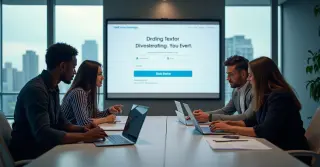Content For Landing Pages

When it comes to landing pages, the key to success lies in crafting content that not only attracts visitors but also converts them into customers. In the competitive landscape of online marketing, the content on your landing page serves as the first impression your business makes. The right words, structured strategically, can drive action, build trust, and inspire confidence in your brand. Successful landing page content requires a deep understanding of your target audience, clear messaging, and a focus on SEO to ensure that your page ranks well and captures organic traffic.
The main heading is arguably the most important element on a landing page. It must grab attention immediately, offering visitors a compelling reason to stay. The headline should clearly articulate the value of your product or service, in a way that speaks to the visitor’s pain points or needs. For example, if your business offers digital marketing services, a headline like “Boost Your Online Sales with Proven Digital Marketing Strategies” directly addresses what the visitor is looking for. A headline that resonates with the target audience will keep visitors engaged and encourage them to explore further.
Once the headline captures the visitor's attention, the subheadline plays a supporting role. It further elaborates on the value proposition and encourages the visitor to continue reading. Subheadlines should provide additional context without overwhelming the reader. This is your opportunity to elaborate on the promise made in the headline and address any potential objections. For instance, "Increase your ROI by up to 300% with tailored marketing strategies" gives a clear benefit while maintaining the reader's interest.
Another essential component of effective landing page content is the call-to-action (CTA). The CTA should be strategically placed and crafted to motivate visitors to take action. Use actionable language that conveys urgency or exclusivity, such as “Get Started Today” or “Claim Your Free Trial Now.” Your CTA should be visible and easy to understand, with contrasting colors that make it stand out from the rest of the page content. Whether it's filling out a form, downloading an eBook, or making a purchase, your CTA is where the conversion happens.
Customer validation is a powerful tool in building trust with visitors. This can come in the form of testimonials, reviews, or case studies. Including real customer testimonials adds credibility to your business and reassures potential customers that others have had a positive experience. For example, a short quote from a satisfied client, such as “This service transformed my online business in just 3 months!” can make a huge difference in converting visitors. Case studies are also highly effective in showcasing how your product or service solves real problems for your customers, providing evidence of its effectiveness.
Reputation badges, such as security badges, money-back guarantees, and privacy policies, also play a crucial role in landing page content. Visitors need to feel that their personal information is safe and that they can trust your business. Displaying relevant certifications, such as “Certified Google Partner” or “Secure Payment Processing,” can assure visitors that they are dealing with a reputable company. When potential customers feel secure, they are more likely to make a purchase or provide their contact information.
The landing page content should be brief but impactful. Avoid extended paragraphs and use numbered lists to showcase key benefits or features. Succinctness is essential—people are scanning, not reading every word, so make sure the most important information stands out. Focus on the gains of your product or service rather than just listing its features. For example, instead of saying “Our software has an analytics tool,” say, “Gain valuable data that will help you grow your business.” This keeps the content focused and targeted on the visitor’s needs.
Incorporating SEO best practices is crucial for landing pages. To ensure your page ranks well in search engines, include relevant phrases that align with what your audience is searching for. However, it’s important not to overdo it—excessive keywords can result in penalties from Google. Instead, naturally integrate keywords into the content, making sure the text flows naturally for the reader. Titles, subheadings, and meta descriptions should also contain primary keywords, as these are key factors for SEO optimization. For example, if your landing page is for a service that helps businesses improve their digital marketing, you might focus on keywords like “digital marketing strategy,” “online marketing services,” and “SEO optimization.”
The layout of the landing page is equally important as the content. A clean, professional layout that complements the text can enhance user experience and boost conversion rates. Avoid excessive details, as it can overwhelm visitors and distract from the main goal of the page. Ensure that important elements, such as the call to action, are above the fold—meaning they are visible without the visitor needing to scroll. A simple, easy-to-navigate design makes it easier for visitors to take the desired action.
It’s important to improve and revise your landing page regularly. Conduct A/B testing to experiment with different headlines, CTAs, and content layouts to see what resonates best with your audience. Small changes, such as tweaking the wording of your CTA or adjusting the placement of your form, can make a significant difference in conversion rates. Use behavioral insights to track user behavior on your page and identify areas for improvement. The more data you gather, the better you can tailor your content and design to meet the needs of your target audience.
Landing pages are critical for converting visitors into leads and customers. To achieve success, your content must be compelling, carefully crafted to encourage action. By optimizing for both the user experience and SEO, you can create landing pages that not only rank highly in search engines but also drive measurable business results. Whether you’re promoting a product, offering a service, or generating leads, effective landing page content is the key to securing and retaining your audience’s attention.










